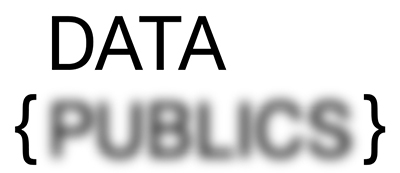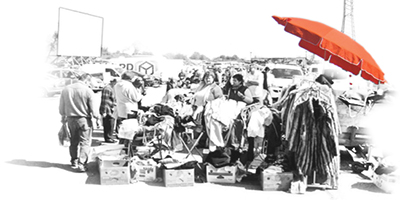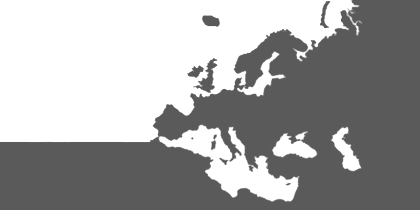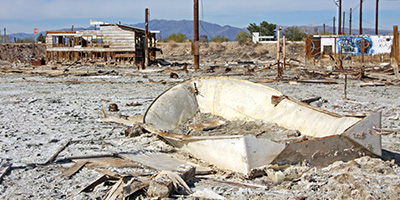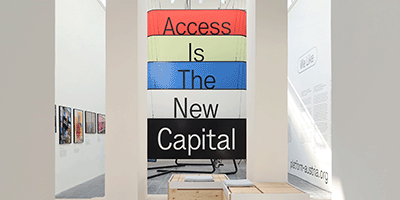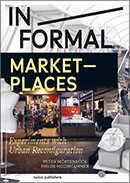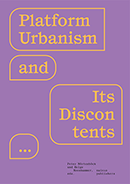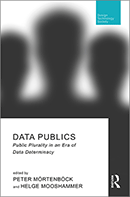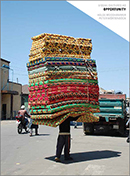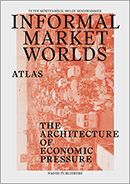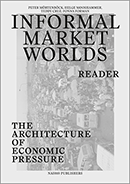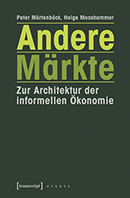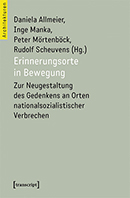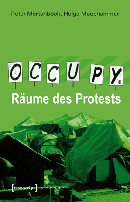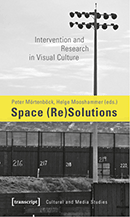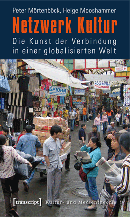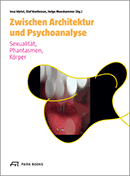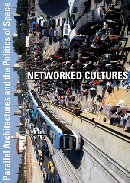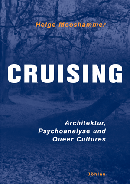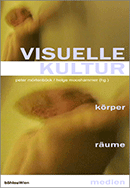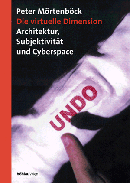RESEARCH
DATA PUBLICS
-
Public plurality in an era
of data determinacy
OTHER MARKETS
--
Mapping typologies and conditions of informality:
How informal markets intersect with global governance
NETWORKED CULTURES
--
The struggle for new forms of artistic practice in an era of global deregulation
WORLD OF MATTER
--
An ecological view on resource politics
SEA OF MARBLE
--
Looking out to the sea: A navigational convergence on the imaginary and the realities of the sea
EXHIBITIONS
La Biennale di Venezia - 17th International Architecture Exhibition 2021
XX Architecture and Urbanism Biennial - Chile 2017
Ephemeral Urbanism
World of Matter
@ HMKV Dortmund
@ James Gallery New York
@ Ellen Gallery Montreal
@ Nash Gallery Minnesota
Networked Cultures -
documentary
Gunners & Runners
Trading Places
Networked Cultures
Gone City
Temporary Zones
Operation Desert
You'll Never Walk Alone
VISITING STALIN
exhibited @
The Temporary Zones, Open Space - Zentrum für Kunstprojekte, Vienna, January – February 2008
Gone City, Magazin 4, Bregenz, April - June 2008
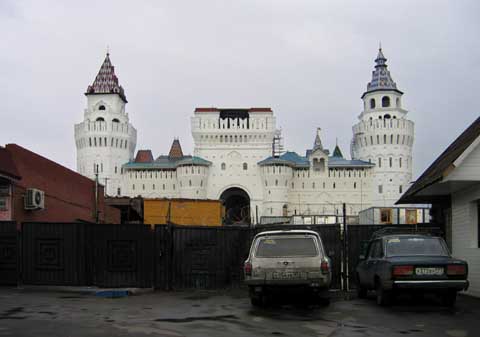
'Visiting Stalin' - a case study on Moscow's Izmailovo market by Networked Cultures - follows the myriad stories and histories around the site of the former Stalinets Stadium in Moscow-Izmailovo that today forms the empty inner zone of the sprawling Cherkizovsky Market. Three times the size of the Moscow Kremlin, the market supports Russia’s new millionaires as well as thousands of migrants from Tajikistan, Uzbekistan, China and extended Southeast Asia, who have come to seek work as stall-minders, carriers and tea-sellers. The project explores how markets function as a dynamic force that generates new forms of collective exchange, and how this process relates to the aesthetics of establishing new social orders.
Although these experimental structures are highly unstable, they leave their mark on the fabric of the city. They transport images, ideas and values between different worlds. And with their improvised technologies, infrastructures and spatial policies, they create openings for new urban situations and new links between the local and the global levels.
The Temporary Zones
Open Space - Zentrum für Kunstprojekte / Vienna
09 Jan – 09 Feb 2008
Participating artists:
Ergin Çavusoglu
Peter Mörtenböck & Helge Mooshammer
Nada Prlja
Open Space - Zentrum für Kunstprojekte opens its door to the public with ‘The Temporary Zones’, an exciting first project developed by the founder and director of Open Space, Gülsen Bal. The exhibition offers a space for exploration of current relations of and in predicated conflict and negotiation within cultural specific conditions. In pointing out the space of current relations the scope of the project allows an engagement of a space that identifies the transitional conditions and globalised flows where the temporal construct seemingly erases all its secrets and ambiguities. In a passage of an unstable world, this hunts for a moment of urgency towards facing the differential structures where the “politics of production” and a network of social discourse traverse by tracing cross-border dialogues.
Review
Benzer, Christa: 'Selbstorganisierte Schauplätze', springerin 2/08
Visiting Stalin
Thirteen dead and fifty-three badly wounded: this is the result of the bomb that exploded at Moscow’s Cherkizovsky Market on 21 August 2006. The dead included six Tajiks, three Usbekis, two Russians, one White Russian and one Chinese. Among the badly wounded were many Chinese and Vietnamese. The suspects are three young Russian skinheads, who are accused of: ‘premeditated murder of two or more persons committed out of national hatred’. Immediately after the attack, the Moscow Public Prosecutor was still convinced that it was related to internal disputes between criminal associations of local traders, as had been assumed in the case of repeated explosions and arson attacks on Moscow markets in the past. Earlier, on 26 March 2005, the 10,000-square-meter Russian Court, the pseudo-historical wooden exhibition complex at Vernizash souvenir market had also been the target of one such ‘explosive’ conflict.
Cherkizovsky Market (often referred to as Izmailovo Market) in the north east of Moscow, is one of the largest informal markets in the city, with connections to all parts of the Russian Federation and beyond. On an area three times the size of that occupied by the Kremlin in Moscow, fifteen specialised trading areas form a rampantly growing bazaar structure that completely surrounds Izmailovo Stadium and includes all sorts of attractions: from Eurasia markets to the Izmailovo Kremlin (with a Vodka Museum), which was specially erected for tourists, the sale of arts and crafts, and a reconstruction of Tsar Alexander’s wooden palace. The market’s ‘owners’ are among Russia’s new millionaires. Telman Ismailov, for instance, developed the AST group (one of Russia’s largest developers) with an estimated 0.5 billion US dollars in annual rent taken from Cherkizovsky Market. A birthday song sung by Jennifer Lopez for a rumoured 1 million dollars established him in the media as one of Moscow’s new oligarchs. At the lower end of the new market-economy scale, there are thousands of migrants from Tajikistan, Uzbekistan, China and an extended Southeast Asia, who have come to seek work at the market as stall-minders, carriers and tea-sellers seven days a week. They sleep in the metal storage containers (above the stalls or on the periphery of the market) or in the cellars of the stadium. In this state of modern slavery, they are not only at the mercy of exploitative employers, but also of arbitrary police behaviour and gangs of young thugs. As a result, many of them never dare to go more than a few hundred meters from the market.
In September 2006, one month after the bombing, the vice-speaker of Moscow City Council announced that the market would be closing at the end of 2006. A few weeks later, the head of the Department of the Consumer Market of Moscow announced that most of the trading places on the site of the Russian State University of Physical Education (RGUFK) would be taken down by 1 July 2007, and the remainder by the end of 2007. This, it was said, would allow the site to be returned to its proper use, as a space where people could devote themselves to physical culture. But how is it possible to determine the ‘proper’ use of a space, especially in an age of global restructuring? Does its use as a venue for sports events really do justice to the original plans? Or isn’t it simply a by-product, a parasitical use of its potential?
During the XXII Olympic Summer Games in 1980, the RGUFK site served as one of the locations of the Moscow Games. For the weight-lifting events, a new indoor arena, the Izmailovo Sports Palace, was erected. At the southern end of the site, next to Izmailovo Park underground station, the Olympic village was constructed in the form of a four-tower hotel complex with 8,000 beds. The stadium itself, which stands in the middle of the grounds, was built during the 1930s. It is a fragment of the envisaged ‘Central Stadium of the Soviet Union’ planned by Stalin to accommodate 120,000 spectators. However, it was never completed. And it also served to camouflage the ‘Reserve Command Centre of the Supreme Commander-in-Chief of the Red Army, I.V. Stalin’. Ultimately, the construction of the stadium was inspired by more than purely sporting considerations. Not only was the stadium intended to be bigger than Berlin’s Olympic Stadium, and its peculiar asymmetrical form designed to hold grandiose military parades at which the columns of tanks could roll into the stadium unhindered from the parade ground to the east. It was also conceived as part of a vast military infrastructure covering the entire Soviet Union. Situated seventeen kilometres to the east of the Kremlin, a bunker beneath the stadium was designed as an intermediary stop-over point in case Hitler should launch a surprise attack on Moscow and the Soviet Command have to be evacuated to Samara, 1,000 kilometres away in the Urals. Consequently, sports events in Izmailovo have always been part of a far greater system of deceptions and compensatory gestures. Cultural events are just as important as strategically embedded building structures for preserving this system. Events such as these helped to sustain policies that were imitated with ever greater rapidity when the RGUFK site was converted into one of the largest informal trading centres in the Russian Federation.
Cherkizovsky Market was a product of the politics of individual initiatives promoted by Perestroika. Under its banner, members of the state sports institute began to use the grounds and buildings commercially. In June 1989, Sergei Korniyenko and a Collective of Enthusiasts leased the stadium buildings. Under the terms of the contract, the spectators stands and the sports fields are to be available for events such as Spartakiade 2000 (‘For a United and Healthy Russia in the 21st Century’). The remaining rooms, like those beneath the stands, can be used commercially. FOP, the sports health enterprise founded in 1989, proved to be extremely innovative. Nowadays, in conjunction with the New Historical Cultural Centre Izmailovo (NIC Izmailovo, founded in 1989), it operates enterprises as diverse as an arbalest shooting range, an Aero Fitness Club, various bars, the Lux Sauna, the Alain Beauty Salon (up to ‘European standard’) and the Preobrazheniye (Transformation) School for the Spiritual Development of Man, which is run by a cosmic artist-healer.
Furthermore, FOP played a vital role in the ‘rediscovery’ of Stalin’s old bunker. In 1994, the Iron Division club helped to organise a museum exhibition which was taken over from the Central Museum of the Armed Forces and opened as a branch on 1 September 1999. Adjacent to the bunker rooms, FOP operates a Georgian-style restaurant called Visiting Stalin, as well as a concert hall (holding 200 people) used for performances by the Prince Sergei Korniyenko Orchestra. Even though the bunker was apparently never used by Stalin himself – just as the stadium never performed the function originally anticipated – one can now book a bunker tour for a little over 100 US dollars. The price also includes a visit to the reconstructed conference hall of the Supreme Command of the Red Army, as well as to Stalin’s study and recreational and leisure areas, plus a dinner at ‘Stalin’.
Alexander Ushakov, the General Director of Vernizash in Izmailovo, another company operating on the site, was an active combat sambo wrestler, before he became a sports trainer. He was also a member of the State University of Physical Education. Ushakov took over the flea-market site to the south of the stadium from the RGUFK. He started to construct the Vernisazh Complex, which, not unlike Disneyland, accommodates countless imitations and set pieces from Russian architecture on an area covering 20,000 square metres. Here, a mixture of Russian arts and crafts is sold alongside Soviet souvenirs such as fur hats and Matroschka dolls, amidst the folklorist scenery of an old Russian village with a fort-like Wild West touch. The Vernisazh tourist market, created under Perestroika, awakens memories of the great expectations placed on the Western market. The far greater part of Cherkizovsky Market balances these expectations against the informal economy created by the new market systems in the deregulated transformation societies in the East.
Whereas the stadium was originally supposed to provide an arena for mass performances demonstrating the superiority of the political order of the Soviet Union, it has now become the archaeological site testifying to the inner emptiness of a Babylonian city-within-a-city into the cracks of which the ants of globalisation have now moved. No longer do revolutionary tanks roll or patriotic armies march on the parade ground, which has disappeared beneath the Eurasia Market. Instead, thousands of carriers and tea-sellers swarm out around the endless labyrinth of its kilometres-long halls to keep this rough trading organism alive. As a central trading place for the sheer necessities of life, the Cherkizovsky Market has become the contested scene of cultural identities where attempts to reconstruct a Russian national identity encounter the complex realities of a globalised migration-economy. The progressive commercialisation of even the tiniest of niches has generated a large number of unforeseen spaces for micro-cultural negotiations, like the one for the 3,000 Mountain Jews from the Caucasus, for whom a 20-square-metre room – laid out with carpets and located between the shoe storerooms and the sportsmen’s and women’s toilets in the caverns of the stadium stands – serves as a synagogue. Like the majority of the hundreds of thousands of people whose existences are inextricably tied up with the market, they, too, are both marginalised and transformed into targets of a global tug-o-war over cultural identity. To some, they are ‘blacks’, to some they are not orthodox enough, while some doubt whether they are Jews at all.
Whereas the owners’ good contacts to the government and the mayor has led to repeated delays in implementing the plans to close the markets, a ruling to restrict the share of foreign workers at markets to 40 per cent, which came into effect on 1 April 2007, really did have a widespread impact. From Moscow to Vladivostock, there are reports of markets collapsing completely. This has not only affected immigrants working at the market, but also all those impoverished sections of the Russian population who are dependent on the cheap products available at these markets. These policies (Russia for the Russians), which are propagated by Putin, are frequently seen as a tactically motivated response to the increase in racially inspired attacks. Consequently, the bombers of 12 August 2006, who felt that there were ‘too many Asians at the market’, ultimately did not only kill thirteen people and wound fifty-three others, but also ended up ruining, with their actions, the existence(s) of an estimated five million illegal immigrants in Russia.
_top
BOOKS
